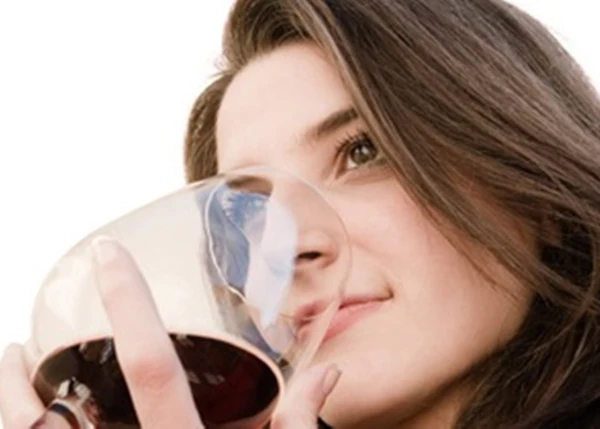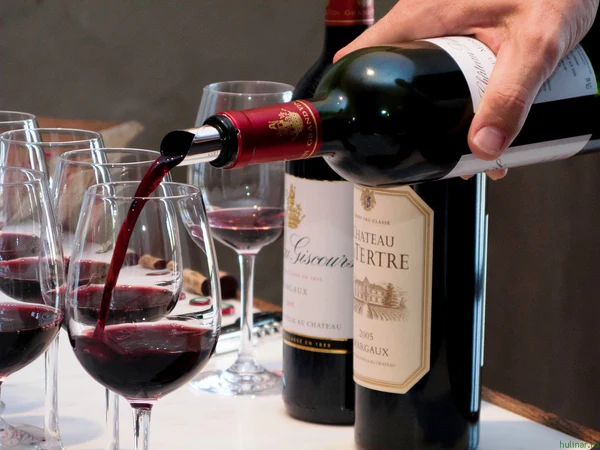Tasting is a whole science and art that can and should be learned. There are different types of tastings, professional and amateur, but the most important thing in any of them is to turn a formal event into an exciting ceremony that brings pleasure.
Wine is a living product that can be perceived differently depending on the time of day, lighting, temperature, and the taster’s well-being and mood.

Wine tasting – rules
Basic rules and some tips will help in conducting any tasting:
– You must feel well, do not smoke or take medication before the procedure;
– Tasting is best done in the morning, when your senses are more fresh and receptive;
– The room should be clean and well ventilated, without bright mixed colors, but if this is not the case, the tables should be covered with white tablecloths, or the evaluation of the wine color should be carried out against the background of a white sheet of paper;
– The ideal temperature inside the room is approximately 19-22°C and humidity 60-70%;
– Lighting is natural, or if it is not possible, it is better to use daylight lamps;
– Avoid extraneous smells: cigarette and cigar smoke, perfumes, flowers, etc.;
– It is advisable to use semi-ellipsoidal tasting glasses (tulip-shaped) specially developed by the French association for standardization AFNOR and the international standardization body ISO, they are also called INAO. They are made of thin, colorless, transparent glass. They have a long leg, a wide bottom and tapering edges. Such glasses have a capacity of 210-225 ml. They are good because you can taste any type of drink in them. Let’s also assume the use of other glasses of a larger, but not smaller volume;
– Ideally, glasses should be impeccably clean and dry;
– It is very important to observe the serving temperature;
– Serve wines in the right order: from white to red, from dry to sweet, from young to more mature, from simple and light to more concentrated, by classification level;
– When tasting, it is customary to observe silence;
– Fees must be established;
– For freshness of perception, it is good to serve clean (non-carbonated) water for rinsing the mouth, white (preferably dried) bread, olive oil;
– It is advisable to change the glass after each tasting sample;
– It is advisable to rate and write down your impressions…
Different wines differ from each other in taste and aroma
How to properly taste wine
In order to properly study and give a full assessment of the drink being tasted, it needs to be tried. In this test we are helped by our life companions – eyes, nose and mouth (taste receptors).
The entire tasting consists of three main parts: visual, olfactory, and taste. Appearance, aromas, taste, texture and aftertaste are determined during the successive assessment.
The wine is poured into glasses and at the beginning we conduct a visual analysis. Our eye can distinguish up to 250 color tones and up to 10 million mixed shades. A visual assessment gives information about the health of the wine, its concentration, maturity. At the beginning, we look at the glass from above and evaluate the surface of the “disc” for mirror quality and whether there are any unnecessary particles. The wine should be clear and its color uniform. Turbidity is a bad sign – sick wine. The presence of different degrees of turbidity allows you to recognize and identify serious defects.
Then we tilt the glass and hold it over a clean white surface, while determining the color intensity, shades, degree of transparency and gloss, presence or absence of weight and carbon dioxide bubbles. The latter are appropriate only in sparkling or “sur lie” wines collected from the sediment, in other quiet wines they are a consequence of young age or insufficiently good vinification, spoilage. The presence of small insoluble crystals (tartaric acid) is allowed, they are also called “gravel” – sediment that occurs in some wines from hypothermia. The edges of the wine “disk”, as well as its shades, allow you to determine the aging stage.

Young red wines have bright colors (pomegranate, cherry, ruby) with purple or crimson shades that disappear over time. Purple is the main color of young wines aged from 6 to 18 months, and red color is characteristic of wines aged for 2-3 years. When aged wines reach maturity, the edges of the “disc” acquire an orange tint, and the color of the wine approaches brick, brownish, for simple wines this is a sign of spoilage.
White wines when young can be colorless or light yellow with greenish reflections, during aging they darken, causing associations with bronze and amber.
Young rosé wines have salmon-pink shades, during aging they acquire light red colors, and old wines acquire a yellow or onion shade. Faint, light colors depend on the grape varieties used, the youth of the vine, too high a yield, the maturity of the wine, etc. Thick shades indicate good extractability, low yield, harvesting grapes from old vines, etc.
